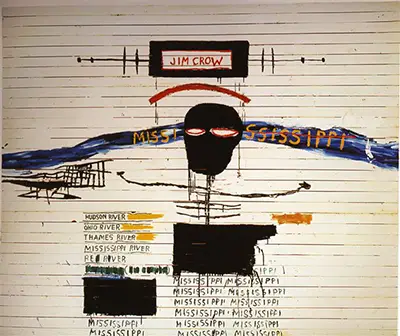The piece was sold at auction in France as recently as 2017 for the highest price yet achieved by any Basquiat paintings within this country. Most of his privately owned pieces remain dotted around his native US, including a large proportion of his output from the 1980s. He was highly prolific though, so there was plenty else to also feature within some notable public art galleries and museums. This particular piece measures over two metres in width and height, with the artist hoping to combine his bold content with large canvases to create an overwhelming experience for viewers of his work. He is known to have used acrylic and grease pencil on wood for this artwork and a considerable amount of research was completed on it in the lead up to its private sale back in 2017.
The work was originally completed in 1986, coming very close to the end of the artist's career due to his premature passing. It was only later in his career that he started to be able to find buyers for his work, but from that point onwards he would rise in popularity very quickly. In fact, it was after his death that his work would become most in demand and today he is just as well known as ever. There is also a greater understanding now of the importance of the art scene within New York City at around the time of Basquiat, and that we was specifically a key member of its success. It was rare for a city in North America to lead the international art world, as previously it would be European cities such as Paris or Florence in previous centuries.
The Jim Crow laws concerned the enforcement of racial segregation in several southern states of the US. Basquiat paints emblazons this at the top of the painting, which serves as its title. The canvas used in this piece is from a number of wooden planks, placed together and then painted in white. Below the title text is a black face with red eyes, typical of the artist's style and most likely inspired by some types of traditional african art as shown in both face masks and also sculpture. Basquiat frequently used skulls and heads to communicate all manner of different meanings. Other parts of the composition underline the importance of the Mississippi river and how it symbolically divides some states from others. He goes on to mention some of the other key rivers within the US as well.



